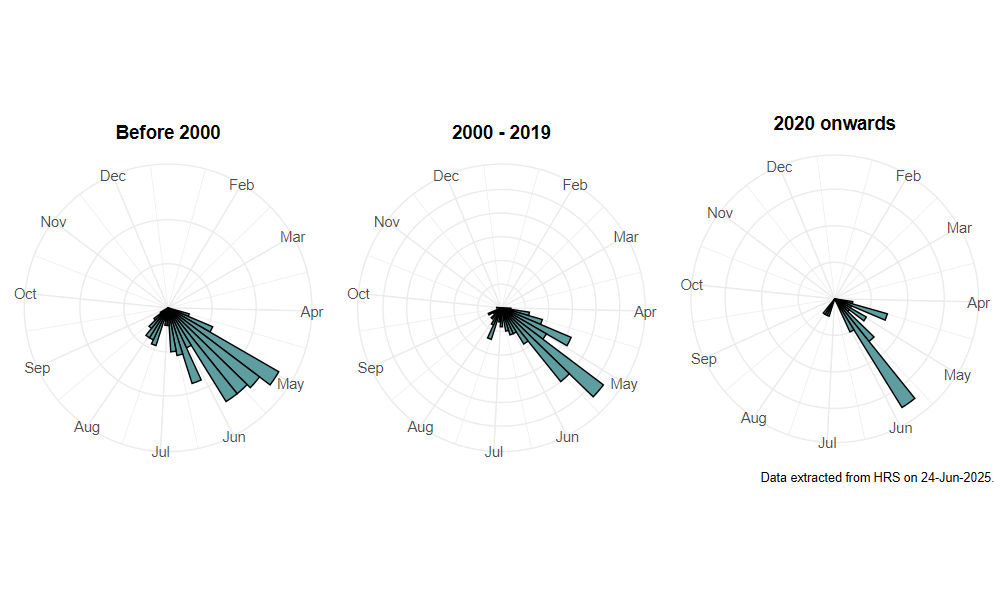Pipiza notata Meigen, 1822
Identification
Identification difficulty = 4. ![]()
![]() according to Ball & Morris, 20241
according to Ball & Morris, 20241
Synonymy
Pipiza bimaculata Meigen, 1822 in Stubbs & Falk (2002)2
Biology
Larvae are unknown, but there is a continental report of rearing what may be this species from larvae collected from Cherry Prunus avium, with a leaf-rolling aphid. Adults are usually found along rides, open areas and edges of deciduous woodland. Whilst they may occasionally visit flowers, they are more often found basking on sunlit leaves.
Flight period
The following plots show the number of unique records per week excluding those reported to be of immature stages.

Distribution
Difficult to sparate from P. noctiluca and the identification difficulty probably limits the numbers of records., This species appears to have declined significantly over the past 35 years, some of which may be a result of changing recorder willingness to tackle difficult taxa.

Trends
The following plots show the Frescalo TFactor vs year and a map of the rescaled frequency (all records) for the species.